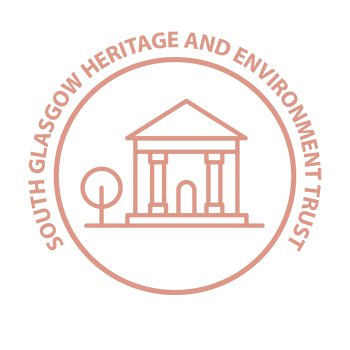FEATURED
The Tobacco Lords Part 1
James Ritchie of Craigton and Daniel Campbell of Shawfield
The connections between Glasgow and the tobacco trade of the eighteenth century are well-known. Furthermore, the links between some of the trades’ most prominent merchants and the slave trade are also becoming known to a growing audience. This is in part thanks to vital research conducted by scholars over the past decade which seeks to address the ‘uncomfortable truths’ of both Glasgow and Scotland’s past. Perhaps more recently, the growth in interest can be attributed to the BLM movement and heightened tensions over the treatment of black people in both the US and the UK. This has brought up discussions as to where our place names, street names, statues and grand city centre buildings come from and whether or not it is correct to hang onto them, with many calling for streets to be renamed and statues to be removed.
Understandably, much of the research has focused on the city centre. However, we at SGHET have looked at how the Southside of the city fits into this dark part of our history. In doing so, we have largely built our research around the estates and grand houses south of the River Clyde. Many of these still exist (such as Pollok House and Aitkenhead House), although dwarfed by the cityscape, while many more were demolished as urban expansion took hold during the twentieth century.
Nonetheless, many of these houses and their grounds stood on the outskirts of the city, which many merchants bought with their newly acquired wealth from the plantations, affording them a degree of disconnect from the rough and tumble of their trade. Here we will focus on two houses which are no longer with us, Craigton and Shawfield, both of which were owned by prominent tobacco merchants during the ‘golden era’ of the tobacco trade which depended on the transatlantic slave trade.
James Ritchie of Craigton (1722–99)
Situated in the old Craigton estate in the parish of Govan, Craigton House was demolished during the inter-war period to make room for housing. The house and its grounds had belonged to one of the ‘Four Young Men’ of the Virginia tobacco trade, James Ritchie. Ritchie, who bought the estate in 1746, was known to have benefited from the transatlantic slave trade in several ways. Firstly, through the trade of tobacco on America’s eastern seaboard, and secondly, perhaps more indirectly, through his connections to the Thistle Bank which he had helped to establish alongside infamous Tobacco Lord and slave trader John Glassford.
Indeed, if you look at compensation records – created following the 1833 British Abolition of Slavery Act (which took effect in 1834) – the Ritchie name is mentioned on two separate claims for compensation following abolition. Both claims were made by James Ritchie’s son, Henry, who had taken over Craigton house in 1830 along with his partnership in the Thistle Bank. Henry Ritchie is listed as a trustee in a joint claim made on the 4th July 1836, along with James Maxwell Wallace and William Stirling. They were compensated over £4000, around £380,000 in today’s money (using MeasuringWorth.com and bearing in mind that such numbers are impossible to calculate exactly) for the loss of 210 enslaved people, of which Ritchie received around a quarter.
Daniel Campbell of Shawfield (1671/2–1753)
Campbell is perhaps better remembered for his tenure as an MP, during which he was one of the signatories to the Act of Union in 1707, and later voted in favour of the much maligned Malt Tax of 1725 leading to the infamous Malt Tax riots. This saw his city centre property of Shawfield Mansion (on what is now Virginia Street) ransacked and its interiors demolished for his troubles. The mansion is also known to have housed John Glassford, one of the most notable of the Glasgow Tobacco Lords, whose links to the slave trade are well-known.
Campbell himself, however, acquired much of his wealth in trading tobacco for iron ore which provided him the means to purchase the Shawfield Estate, next to Oatlands and Polmadie, in 1707. Prior to the Act of Union, Scots were unable to trade with English colonies in the Americas through the Navigation Acts (1651-96) which sought to maintain English monopoly over the colonies. Despite this, Campbell made a considerable amount from both the trade of tobacco and more directly, in the trading of enslaved people.
The house and estate were passed down to his son Walter who then sold it to the chemical works firm J&J White in 1788. Due to ongoing contamination issues, the site which included the 150-year old Shawfield House was pulled down in the late 1960s. Today the area is home to a large industrial estate which sits on the city boundary between Glasgow and Rutherglen.
This blog is part of a wider article which details our research on the Southside’s links to the slave trade.
By Mark McGregor
Southside Slavery Legacies project
In 2020 South Glasgow Heritage and Environment Trust began working on the #SouthsideSlaveryLegacies project, including a potential heritage trail, walks and events, as well as blogs on our website and published articles.
If you would like to know more or become involved, please sign-up to the Southside Slavery Legacies mailing list, message us on Facebook or Twitter, or contact info@sghet.com.
Further Reading
- Moss, Michael, ‘Daniel Campbell of Shawfield’ (Online, 2004).
- SCOS Archive, ‘James Ritchie of Craigton and Busbie’ (Online, year unknown)
- Mullen, Stephen, It Wisnae Us: The Truth About Glasgow and Slavery (RIAS, 2009)
- Devine, T M, The Tobacco Lords: A Study of the Tobacco Merchants of Glasgow and their Trading Activities c. 1740-1790 (Edinburgh, 1990).
- –, Clearance and Improvement: Land, Power and People in Scotland, 1700-1900 (John Donald, 2006)
- UCL Department of History, ‘Legacies of British Slave-ownership’ (Online, 2009-2020).
- Shawfield House on Canmore (Historic Environment Scotland, John R Hume collection, online)




no replies